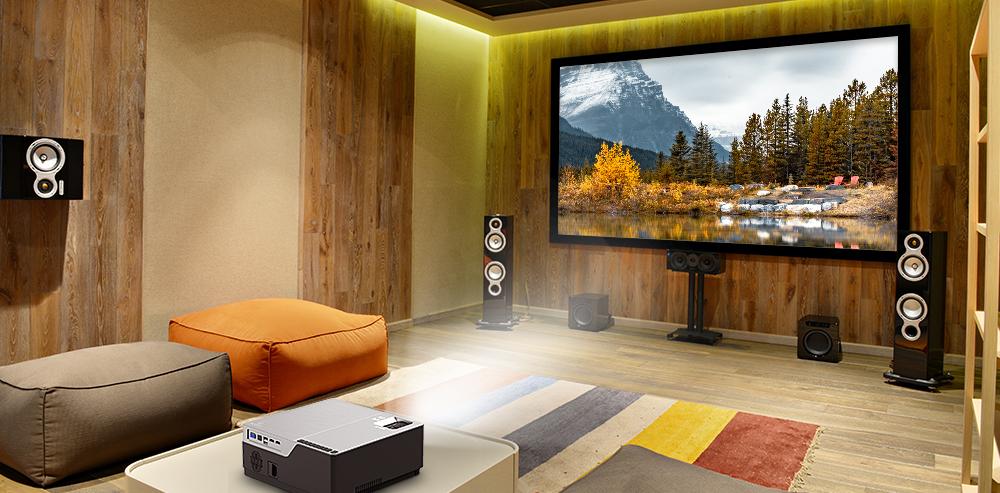How to Easily Connect Wireless Speakers to AV Receiver: Step-by-Step Guide
To connect wireless speakers to an AV receiver, ensure both devices are within range, enable Bluetooth pairing, and select the wireless speaker as the audio output source on the receiver. When setting up your home audio system, you may want to use wireless speakers to eliminate the need for messy cords and cables.
Connecting wireless speakers to an AV receiver is a simple process that allows you to enjoy high-quality audio without the hassle of wires. We will guide you through the steps to connect your wireless speakers to an AV receiver and enhance your audio experience.
By following these straightforward instructions, you can easily enjoy your favourite music or movies with a wireless, clutter-free setup.
Understanding Wireless Speaker Technology
Wireless speakers have revolutionized the way we enjoy music, providing convenient solutions for those who want to eliminate cumbersome wires and cables. Understanding wireless speaker technology is crucial for seamlessly connecting them to your AV receiver and enhancing your audio experience. In this article, we will explore the basics of wireless speaker technology, differentiate between Bluetooth, Wi-Fi, and other wireless connectivity options, and discuss the pros and cons of wireless speakers compared to wired options.
Explaining The Basics Of Wireless Speaker Technology
Wireless speaker technology allows audio signals to be transmitted without the need for physical connections. Instead of traditional speaker wires, wireless speakers utilize various wireless communication protocols to receive audio signals from an audio source, such as an AV receiver, smartphone, or computer.
Built-in amplifiers and transmitters within the wireless speakers receive the audio signals and convert them into sound waves that fill your room. This eliminates the need for long speaker wires running across your living space and provides greater flexibility in speaker placement.
Differentiating Between Bluetooth, Wi-Fi, And Other Wireless Connectivity Options
When it comes to wireless connectivity options for speakers, Bluetooth and Wi-Fi are the most common choices. However, it’s important to understand the differences between them:
| Wireless Connectivity Option | Pros | Cons |
|---|---|---|
| Bluetooth |
|
|
| Wi-Fi |
|
|
In addition to Bluetooth and Wi-Fi, other wireless connectivity options include NFC (Near Field Communication), which enables quick and effortless pairing by simply touching the devices together, and proprietary wireless protocols specific to certain speaker systems.
Discussing The Pros And Cons Of Wireless Speakers Compared To Wired Options
Wireless speakers bring a range of advantages and considerations when compared to their wired counterparts:
Pros of wireless speakers:
- Eliminate the need for unsightly wires running across your room
- Allow for easier speaker placement and rearrangement
- Provide flexibility in multi-room audio setups
- Offer convenient compatibility with smartphones and other portable devices
Cons of wireless speakers:
- Potential audio quality loss due to compression in certain wireless protocols
- Require stable wireless connectivity for uninterrupted playback
- May have a limited range depending on the wireless technology used
- Can be more expensive compared to wired speaker setups
By understanding the basics of wireless speaker technology, differentiating between Bluetooth, Wi-Fi, and other wireless connectivity options, as well as considering the pros and cons of wireless speakers, you can make informed decisions when connecting them to your AV receiver. With the right setup, you’ll elevate your audio experience and enjoy the freedom of wire-free listening.
Preparing Your AV Receiver For Wireless Connection
Connecting your wireless speakers to your AV receiver can enhance your audio experience and give you the freedom to place speakers wherever you want without the hassle of cables. Before you start, it’s important to prepare your AV receiver for a wireless connection. This involves checking compatibility, updating firmware, and identifying the available wireless connection options on your receiver.
Checking The Compatibility Of Your AV Receiver With Wireless Speakers
Before attempting a wireless connection, you should ensure that your AV receiver is compatible with wireless speakers. Not all receivers support wireless connectivity, so it’s crucial to verify this beforehand. To check for compatibility, you can refer to the manufacturer’s documentation or the receiver’s specifications. Look for terms like “wireless-ready” or “wireless-capable.” If your receiver doesn’t have these features, you may need to consider alternative options or look for external devices that can add wireless capability.
Updating The Firmware Of Your Av Receiver, If Necessary
Firmware updates can bring added features, bug fixes, and improved performance to your AV receiver. Before connecting wireless speakers, it’s a good practice to check if your receiver has the latest firmware installed. Firmware updates often include enhancements related to wireless connectivity. To update the firmware, follow the instructions provided by the manufacturer. Typically, this involves connecting the receiver to your home network, accessing the settings menu, and checking for available updates. Keep in mind that firmware updates can vary depending on the receiver model, so it’s essential to consult the user manual for specific instructions.
Identifying The Available Wireless Connection Options On Your AV Receiver
Once you’ve confirmed compatibility and updated the firmware, it’s time to identify the available wireless connection options on your AV receiver. Different receivers offer different wireless technologies, such as Bluetooth, Wi-Fi, or proprietary wireless protocols. Refer to your receiver’s user manual or settings menu to find out which wireless options are available. It’s also worth noting any additional requirements, such as specific apps or devices, that may be necessary for establishing a wireless connection. By having a clear understanding of the available wireless options, you’ll be able to select the most suitable method for connecting your wireless speakers to your AV receiver.
Setting Up Your Wireless Speakers
Connecting wireless speakers to your AV receiver is a great way to upgrade your home audio system without the hassle of wires. Not only does it provide the freedom to place speakers wherever you want, but it also ensures optimal audio performance. In this guide, we will walk you through the process of setting up your wireless speakers, from unboxing and inspecting to placing them in the ideal location and powering them on.
Unboxing And Inspecting The Wireless Speakers
Before diving into the setup process, it’s important to unbox and inspect your wireless speakers. Start by removing the speakers from the packaging and carefully examine them for any visible damage. Check that all the necessary components are included, such as power cords, remote controls, and user manuals. Taking these initial steps will ensure that you have everything you need for a smooth setup experience.
Placing The Wireless Speakers In An Ideal Location For Optimal Audio Performance
Now that you have unpacked your wireless speakers, it’s time to find the perfect spot for them in your room. Consider the following factors when determining the ideal location:
- Room acoustics: Take note of the dimensions and materials of your room, as they can impact the sound quality. Remember that larger, open spaces may require more powerful speakers to fill the room with sound.
- Speaker positioning: Aim to position the speakers at ear level for the best listening experience. If your speakers have adjustable stands or wall mounts, make sure to utilize them to achieve the desired height and angle.
- Distance from walls and obstacles: Keep your wireless speakers at least a foot away from walls and other objects to minimize audio reflections and maximize sound clarity.
By considering these factors, you can ensure that your wireless speakers are placed in an ideal location, resulting in optimal audio performance.
Powering On The Wireless Speakers And Ensuring They Are Ready For Pairing
With your wireless speakers positioned perfectly, it’s time to power them on. Connect the power cord of each speaker to a power source and switch them on. Check the user manual for any specific instructions related to powering on your particular model. Once the speakers are turned on, make sure they are in pairing mode, ready to connect with your AV receiver.
Most wireless speakers will have a pairing button or an LED indicator to signal they are ready for connection. Refer to the user manual for the specific method to enable pairing mode. It’s essential to ensure that your AV receiver is also in pairing mode, ready to establish a wireless connection with the speakers.
By following these simple steps and paying attention to the instructions provided with your wireless speakers, you can easily set them up for a seamless listening experience.
Pairing Wireless Speakers With Your AV Receiver
Connecting wireless speakers to your AV receiver allows you to enjoy a surround sound experience without the hassle of running cables across your living space. However, getting the speakers paired with your AV receiver may require some initial setup. In this section, we will guide you through the process of pairing wireless speakers with your AV receiver, starting from activating the wireless pairing mode on your AV receiver.
Activating The Wireless Pairing Mode On Your AV Receiver
To establish a connection between your AV receiver and wireless speakers, you first need to activate the wireless pairing mode on your AV receiver. Follow these steps:
- Start by locating the menu settings on your AV receiver’s remote control.
- Access the menu settings and navigate to the “Wireless” or “Bluetooth” section.
- Select the “Pairing” or “Discoverable” option to enable the wireless pairing mode on your AV receiver.
- Wait for the AV receiver to activate the wireless pairing mode, indicated by a blinking LED light or an on-screen prompt.
Note: The specific menu options and steps may vary depending on the model and brand of your AV receiver. Consult the user manual for detailed instructions tailored to your device.
Initiating The Pairing Process From The Wireless Speakers
Once the wireless pairing mode is activated on your AV receiver, you are ready to initiate the pairing process from your wireless speakers. Follow these steps:
- Locate the pairing button or switch on your wireless speakers.
- Press and hold the pairing button or switch until the LED indicator starts flashing, indicating that the speakers are ready to pair.
- At this point, your wireless speakers will automatically scan for available devices, including your AV receiver. The scanning process may take a few seconds.
- Once your speakers detect the AV receiver, they will establish a secure wireless connection. The LED indicator on both the speakers and the AV receiver will stop flashing and remain solid, confirming a successful pairing.
Troubleshooting Common Pairing Issues And Ensuring A Successful Connection
In some cases, you may encounter pairing issues or have difficulties achieving a successful connection between your wireless speakers and AV receiver. Here are some troubleshooting tips to help you resolve common issues:
- Ensure your AV receiver and wireless speakers are within close proximity to each other, as objects and walls can interfere with the wireless signal.
- Verify that both devices have sufficient power and are turned on.
- Double-check that the wireless speakers are compatible with your AV receiver. Consult the user manuals or manufacturer’s website for compatibility information.
- If the pairing fails, try resetting both your AV receiver and wireless speakers to their factory settings before attempting the pairing process again.
- Consider updating the firmware of your AV receiver and wireless speakers to the latest version, as firmware updates often address compatibility issues and improve performance.
By following these steps and troubleshooting tips, you can successfully pair your wireless speakers with your AV receiver, allowing you to enjoy an immersive audio experience free from tangled wires.
Configuring And Calibrating The Wireless Speakers
Once you have successfully connected your wireless speakers to your AV receiver, the next step involves configuring and calibrating them to ensure an optimal audio experience. In this section, we will walk you through the necessary steps to access the audio settings on your AV receiver, select the wireless speakers as the output source, adjust the speaker settings to match your room’s acoustics, and finally fine-tune the audio parameters to achieve the desired sound quality.
Accessing The Audio Settings On Your AV Receiver And Selecting The Wireless Speakers As The Output Source
Configuring your AV receiver to recognize and utilize the connected wireless speakers is crucial. To access the audio settings on your AV receiver:
- Ensure your AV receiver is powered on and connected to your TV or display.
- Using your remote or the front panel controls, navigate to the AV receiver’s menu options.
- Locate the “Audio Settings” or “Sound Settings” menu.
- Within the audio settings menu, find the “Output Source” or “Speaker Setup” option.
- From the available options, select the wireless speakers as the output source.
Once you have selected the wireless speakers as the output source, your AV receiver is now configured to transmit audio wirelessly to these speakers.
Adjusting The Speaker Settings To Match Your Room’s Acoustics
Optimizing the speaker settings according to your room’s acoustics is essential to achieve the best audio performance. Follow these steps to adjust the speaker settings:
- Access the “Speaker Settings” menu on your AV receiver.
- Locate the “Speaker Configuration” or “Speaker Size” option.
- Select the appropriate size for each speaker connected, typically denoted as “Small” or “Large”.
- If available, adjust the individual speaker levels to ensure a balanced output.
- Save the settings and move on to fine-tuning the audio parameters.
By matching the speaker settings to your room’s acoustics, you can enhance the overall audio quality and achieve a more immersive listening experience.
Fine-tuning The Audio Parameters To Achieve The Desired Sound Quality
To further enhance the sound quality and tailor it to your preferences, you can fine-tune the audio parameters on your AV receiver. Here’s how:
- Locate the “Audio Settings” or “Sound Settings” menu on your AV receiver.
- Explore the available options, which may include equalizer settings, surround sound modes, and audio presets.
- Experiment with different settings while playing audio content to find the ideal combination for your taste.
- Take note of any changes you make and their impact on the sound quality.
- Once you are satisfied with the audio adjustments, save the settings and enjoy your wireless speaker setup.
By fine-tuning the audio parameters, you can customize the sound output according to your preferences, ensuring an immersive and enjoyable audio experience.


Credit: www.nytimes.com
Frequently Asked Questions On How To Connect Wireless Speakers To Av Receivers
Can I Connect Wireless Speakers To My AV Receiver?
Yes, you can connect wireless speakers to your AV receiver by using a wireless audio transmitter. This allows you to enjoy high-quality, wireless audio without the need for long speaker wires.
How Do I Set Up Wireless Speakers With My AV Receiver?
To set up wireless speakers with your AV receiver, first, ensure that your wireless audio transmitter and receiver are compatible. Then, connect the transmitter to your AV receiver’s audio output and the receiver to your wireless speakers. Finally, follow the manufacturer’s instructions to pair the transmitter and receiver.
Do I Need Wi-Fi to Connect Wireless Speakers To An AV Receiver?
No, you don’t need Wi-Fi to connect wireless speakers to an AV receiver. Wireless speakers can be connected to an AV receiver using technologies such as Bluetooth or RF (Radio Frequency). Wi-Fi is only required if you want to stream audio from online sources or control the speakers using a mobile app.
Conclusion
To wrap up, connecting wireless speakers to an AV receiver is a straightforward process that enhances your audio experience. By carefully following the steps outlined in this guide, you can effortlessly synchronize your speakers and enjoy seamless audio connectivity. Remember to take into account compatibility, signal strength, and proper placement for optimal performance.
So, go ahead and elevate your home theatre setup with wireless speaker integration. Happy listening!




